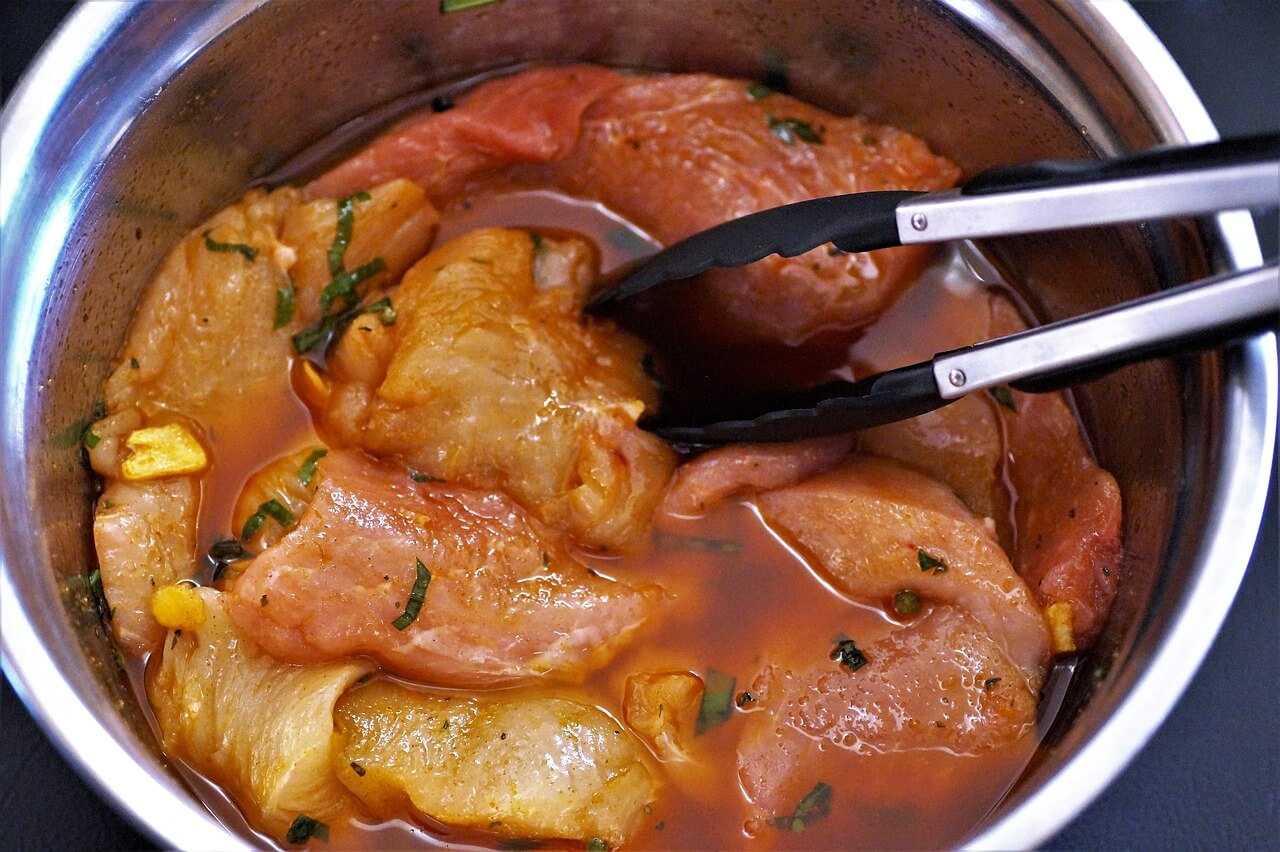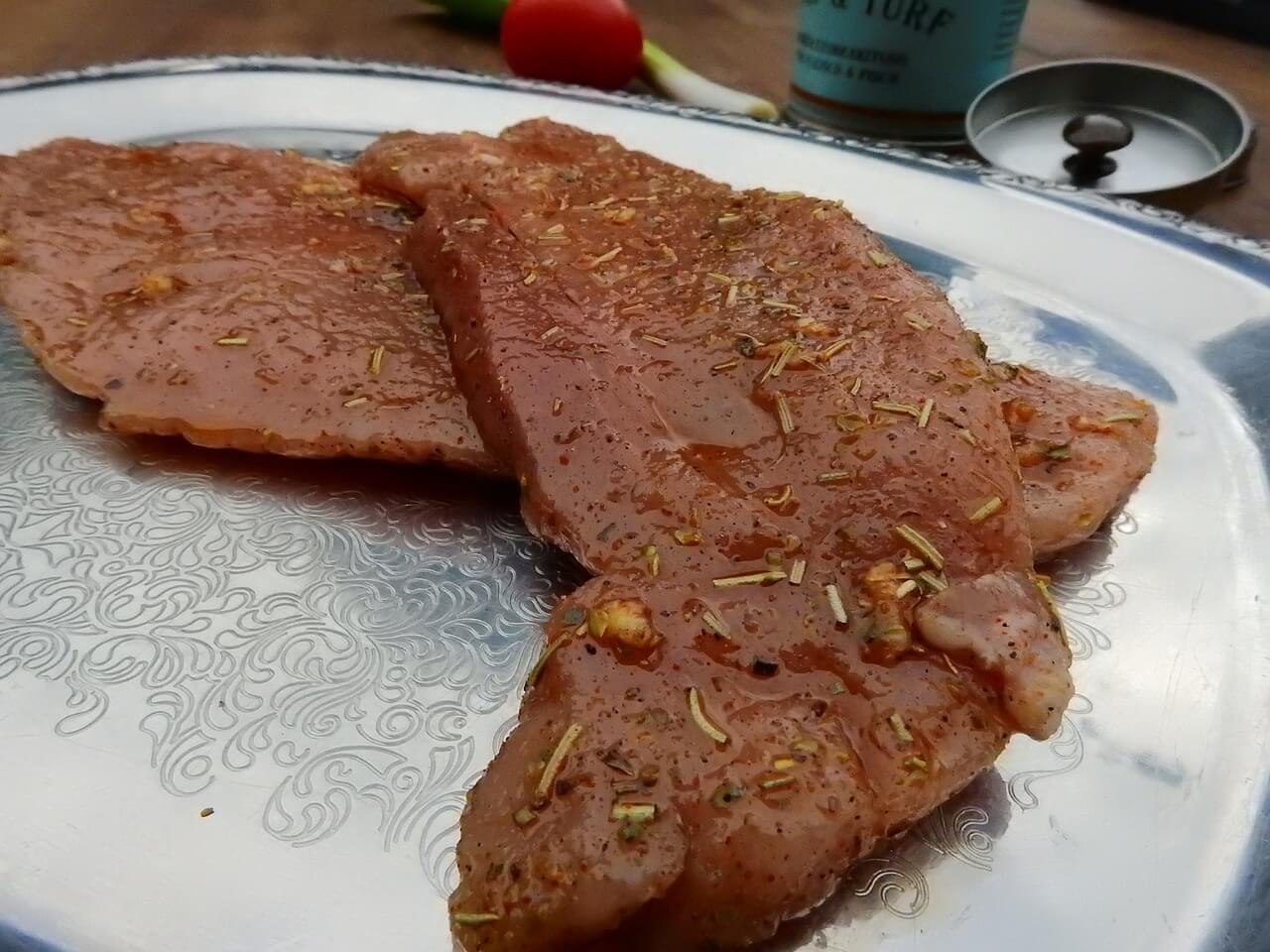Vacuum sealing is a great way to preserve food, even meat. But can you vacuum seal marinade meat? Will it be as good? Does this affect the flavour? Let’s find out!
There are as many different options for meat and marinades as there are meat and marinades, so just pick your favourite and get started.
Can You Vacuum Seal Meat With Marinade And Freeze?

Vacuum sealing and freezing meat is a great way to store it and keep it for a while. But vacuum sealing meat in its marinade? Well, this is nothing short of genius!
Making a marinade can be fiddly, and if you decide on the spur of the moment that you’d like a marinaded meal, your meat might not have time to absorb the flavours fully.
Vacuum sealing your meat with its marinade is a great way to save time, and to ensure that you always have a delicious meal up your sleeve (well, in your freezer actually. Marinading meat up your sleeve is not recommended!)
You can use any meat for your marinading and sealing; just pick your favourite and know that it will emerge from the freezer as delicious as it went in.
Storing meat with its marinade in the freezer is a great way to preserve not only the meat but the delicious flavour of your marinade.
When you come to eat it, ensure that you defrost it thoroughly, and cook it according to the normal instructions for that type of meat.
There are so many different types of marinade you can choose from; just ensure that you check the ingredients you use to ensure they are suitable for freezing.
Vacuum sealing, as opposed to simply storing meat and marinade in a sealed bag, will actually help the flavour get into the meat better.
Can You Vacuum Seal Steaks In Marinade?
Vacuum sealing works for all types of meat, up to and including your favourite steak. This is great, because you can whip up a delicious meal quickly, even on a work night!
Steak is one type of meat that can be quite thick and fibrous, so marinading works really well because it makes the meat moist, as well as allowing it to absorb the marinade flavours.
There are, however, certain cuts of steak that are not recommended to be used in marinade, because the flavours will not enhance the meat. These are:
- Ribeye
- Porterhouse
It is not recommended to marinade these cuts because they should already be tasty, moist and delicious without any additions.
The best types of meat to marinade are:
- Flank
- Sirloin
- Round
- Skirt
- Hanger
These cuts are tougher, so they will take the marinade well, and will benefit from being left to their own devices in a delicious marinade for a wee while.
- Beef and pork make excellent steaks to seal in a vacuum bag, as these are tougher cuts that will absorb the marinade well.
- Chicken is another popular meat to marinade, and you will find that the vacuum sealing will really help the flavour penetrate deeply into the meat.
- Tough, gamey meat is a great one to vacuum seal with a marinade, as the vacuum seal with the marinade will help the end result to be much more tender and tasty.
How Do You Vacuum Seal With Marinade?

- First, make your marinade. There are many ways you can do this – from a simple lemon juice plus salt and pepper marinade, to a more complicated version with many more ingredients.
- The internet is filled with ideas to make your own tasty marinade, so just pop a question into a search engine and you will come up with many ideas!
- Place the meat into a vacuum sealing bag, and pour the marinade carefully in. Remove all the air from the bag (be careful not to lose the marinade!)
- Place the end of the bag into the vacuum sealing machine and press the “on” button, to allow the air to be sucked out.
- You will have to keep an eye on the air being removed, as it will be very easy for the machine to accidentally suck up the marinade too, which can damage the machine – plus lose you your precious, delicious marinade!
This article shows you the best ways to vacuum seal different things, including bags containing liquid which can be tricky.
Does Vacuum Sealing Marinade Meat Faster?
The short answer is yes, yes it does. There are a few good reasons for this, and it turns out you can reduce your marinading time to about 30 minutes – ideal for those times when you fancy a marinated meal at the last minute!
- Marinading meat in a vacuum seal will remove all the air, allowing the marinade to penetrate the meat better than it normally would.
- Even if you marinade your meat for 24-36 hours, you won’t get the same penetration to the fibres of the meat as you will with a vacuum sealing method.
- Vacuum sealing your meat with its marinade, even if you don’t want to freeze it afterwards, is one of the best ways to marinade meat.
- This is also a great way to batch cook – create enough of your favourite marinade for a few different pieces of meat, then store them separately in vacuum bags.
- They should store in your freezer for up to 6 months – but we’re pretty sure you won’t be able to leave them alone for this long!
Here is a little video that shows you the effectiveness of vacuum sealing meat with marinade, and compares vacuum sealing with a standard ziplock bag:
Vacuum sealing your meat and then freezing it is a great time saving, flavour enhancing way of cooking your food.
So, just to re-cap – the vacuum sealing improves the taste and texture, while freezing it will store it for months. Can you vacuum seal marinade meat? Yes you can, and yes you should!
